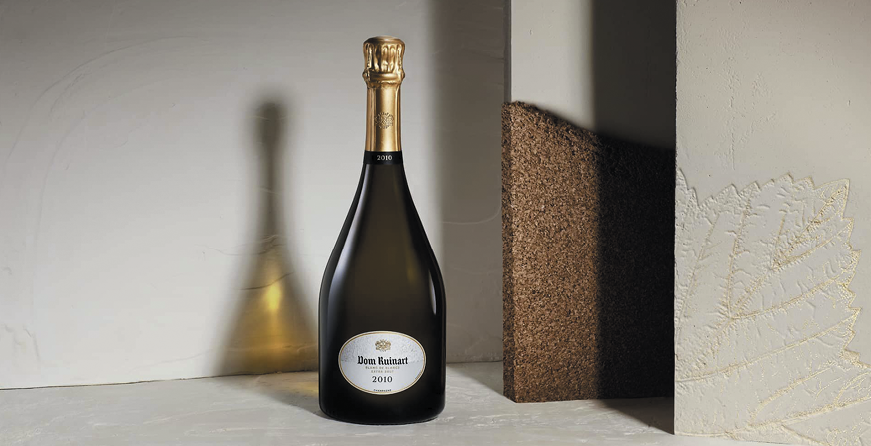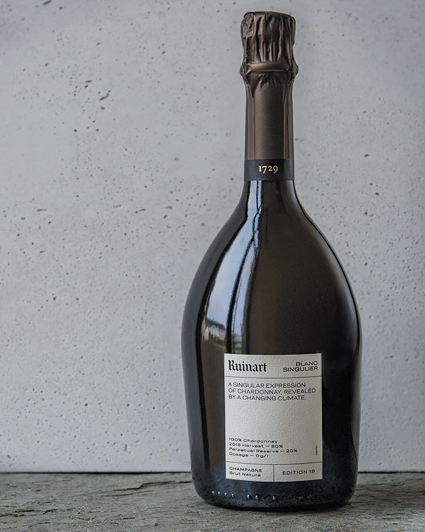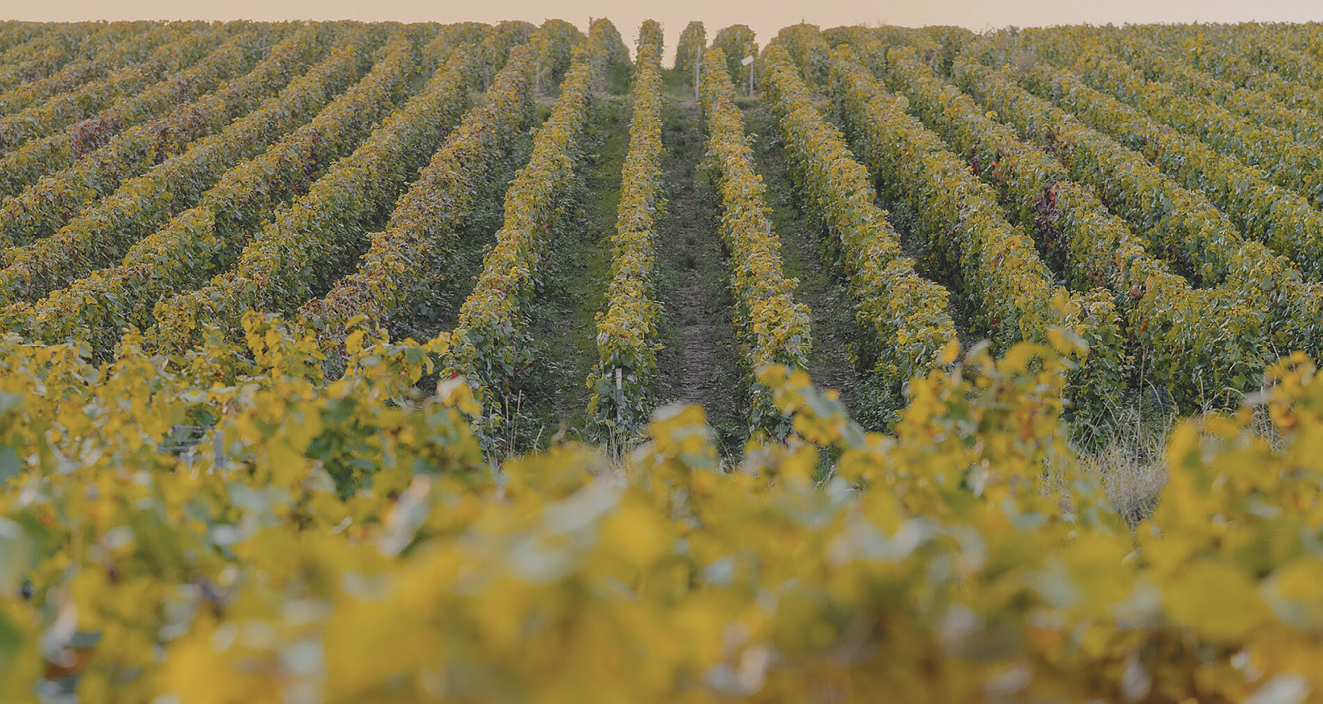- Home
- Media Kit
- MediaJet
- Current Issue
- Past Issues
- Ad Specs-Submission
- Reprints (PDF)
- Photo Specifications (PDF)
- Contact Us
- PRIVACY POLICY
- TERMS OF USE
![]()
ONLINE
![]()
ONLINE

Timeless Elegance
Editors’ Note
As a child, Frédéric Panaïotis spent much of his time in the small Champagne vineyards of his grandparents, sampling the fruits of their labor. His professional career began with a compulsory training period at the Comité Interprofessionnel du Vin de Champagne, where he studied the méthode champenoise process in general and wine clarification in particular, including fining, filtration and riddling. Over the years, Panaïotis returned several times to the Comité, subsequently specializing in the interaction of cork and wine, and training the professional panel on different tasting procedures. His winemaking apprenticeship included appointments in France and California. Panaïotis graduated from the Institut National Agronomique Paris-Grignon with a specialization in Viticulture-Oenologie, followed by a degree from the Ecole Supérieure d’Oenologie de Montpellier. He joined Champagne Ruinart in 2007 as Chef de Caves. In this position, he has the responsibility of creating the blends, from the non-vintages Blanc de Blancs and Rosé to the prestige cuvees of Ruinart, Dom Ruinart and Dom Ruinart Rosé. He also plays a significant role in the communication efforts of Champagne Ruinart, travelling extensively to international markets.
Company Brief
Ruinart (ruinart.com), the world’s first champagne house, has been a symbol of French art de vivre since it was founded in 1729. For nearly 300 years, Maison Ruinart has passed down time-honored savoir-faire through generations, supporting local craftsmanship and showcasing artistic talent while remaining firmly committed to continuous innovation. Engaged with the major challenges of its time, Ruinart is deeply committed to protecting the environment.

2010 Dom Ruinart
Will you highlight the history of Ruinart and what have been the keys to Ruinart’s ability to stay relevant through the years?
We are the first house dedicated to the production of champagne, and at the same time the company has always been innovative and disruptive: the first house to ship Rosé champagne in 1764; the first house to use wooden cases which at the time was not done; the first house to use “Crayères” – natural cellars classified as a UNESCO World Heritage Site. We were also the first house to have an artist commit to make advertisements for our champagne, famous Czech artist, Alfons Mucha, in 1896.
The mix of tradition and modernity has always been in Ruinart’s DNA. This has allowed us to remain relevant through the centuries, and we continue to focus on innovation with our packaging and our commitment to sustainability. With packaging, luxury used to be thought of in terms of weight and size, but we approach it differently with packaging that is very simple and beautiful, as well as completely recyclable and sustainable.
We are always looking at the future and how we can stay ahead and continue to be an industry leader.

2018 Ruinart Blanc Singulier
Ruinart is known for its craftsmanship. How is technology impacting the production of champagne?
I think that there is a misconception about craftsmanship. You can be a craftsman using the most modern tools and, with wine which is so difficult to make, it is necessary to use technology. We use a lot of data to know exactly what is happening throughout the process. The craftsmanship comes with the strength of our team and the development of our palate. We invest in training and are constantly learning and growing. I believe that craftsmanship is the mix of technology and the human touch.
Where do you see growth opportunities for Ruinart?
We are very strong in France – that is how the house reestablished itself. Many people do not know that the house almost went bankrupt in 1946. There was no money and we had two customers – imagine that, only two customers, and one of them was not paying the bills. We were producing a total of 10,000 bottles, and the brand nearly disappeared. The person who was overseeing the brand at the time, who was 26 years old, knew that the focus needed to be on the French market, so we sold our wines in France.
When I joined the company over 16 years ago, 75 percent of our wines were sold in France. We did not want to put all of our eggs in one basket, so we focused on growing the business in other markets. We have a lot of potential outside of France, and I would mention two markets in particular where we are currently underrepresented, and those are the United States and Japan. We see strong potential in these two markets in the coming years.

Dom Ruinart vineyard
How challenging is it to differentiate in the industry and how do you describe the Ruinart difference?
I think that we have a major advantage which is our history and heritage, coupled with our innovation and creativity. An example is the investment we made in our bottle which is now so recognizable as Ruinart. We continue to reinvent ourselves, such as our focus on climate change and sustainability which are more and more relevant for our consumers.
Ruinart has a timeless elegance – when you visit our winery, we have beautiful cellars and you can experience the history of Ruinart while seeing how we are investing for the future.
Do you feel that champagne is well-understood by consumers for being more than just a celebratory wine?
We have no interest in losing the celebratory aspect of champagne, since it is an important way to introduce Ruinart in less mature markets where the celebratory aspect of champagne will be an important part of entering that market. Having said that, it is unfortunate that champagne is often not viewed as a true wine, meaning one that can age and that pairs amazing with food. We are working to build awareness around this message to show the consumer all of the aspects and qualities of champagne.

Dom Ruinart “Crayères” – natural cellars classified as a
UNESCO World Heritage Site
Will you elaborate on Ruinart’s commitment to sustainability?
It is simple for us since everything is born in the vineyards and in nature. If we cannot manage to keep some stability in the conditions to grow grapes, there will no longer be a house of Ruinart. It is critical for Ruinart, it is critical for everyone in the Champagne region, and it is increasingly critical for everyone in the world.
As we continue to invest in sustainable practices, we are proud to introduce our first new cuvee in 20 years – Blanc Singulier. A singular expression of Chardonnay, revealed by a changing climate, Ruinart Blanc Singulier was conceived to bear witness to the climate variations our vines endure, while showcasing my team’s savoire faire and ability to recraft Chardonnay. Blanc Singulier is a permanent addition to the Ruinart portfolio and will consist of a collection of singular editions, representing the climate conditions of a particular year, each to be enjoyed uniquely.
What has made Ruinart so special for you?
The position of cellar master is a position you keep for a long time. In the wine and spirits business, it takes time to build things. You create something, put it in reserve, let it age – this takes time. We are guardians of the temple, and it is our responsibility to prepare Ruinart for the next generation. You never get tired of this job – every harvest is different, and every day is new.![]()